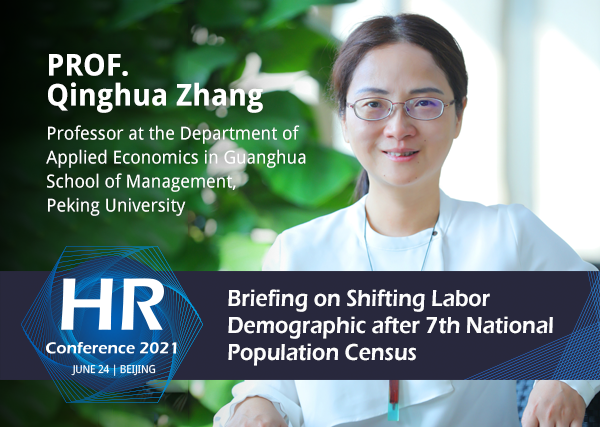Ahead of the 22nd AmCham China Annual Human Resources Conference on June 24, AmCham China caught up briefly with keynote speaker, Prof Qinghua Zhang, Professor at the Department of Applied Economics in Guanghua School of Management, Peking University. Click here to learn more and register!
Dr Zhang’s extensive research background includes Urban Economics, Public Finance, Labor Search and Matching, and Applied Econometrics. She has been published in numerous distinguished economic journals including Review of Economics and Statistics, Journal of Monetary Economics, Rand Journal of Economics, Journal of Urban Economics, and more. At the HR Conference, Dr Zhang will deliver a briefing on the shifting labor demographic after the 7th National Population Census.
Today, companies of all sizes and industries are facing significant challenges in strengthening business performance and sustaining employee productivity amidst the continued disruptions brought by the COVID-19 pandemic. What specific insights and/or topics are you most looking forward to discussing at this year’s HR Conference?
Dr Zhang: China’s demographic dividend has been disappearing since 2012. Without cheap labor, it is especially important to improve employee productivity. Two essential structural changes in China’s labor force in the past decade have presented new opportunities. One change concerns the quality of labor. The educational attainment in China has increased significantly over the period 2010 –2020; especially, the college educated population has reached 218 million, which amounts to 15.57 of the total population according to the recent released the 2020 census reports. Another change lies in the spatial structure of population. More people are flowing to city belts and metropolitan areas, which may foster greater agglomeration economies and generate productivity gains potentially.
Your keynote will cover the shifting labor landscape following the 7th National Population Census, what is a key takeaway you will expand on during your briefing?
Dr Zhang: Why have some regions experienced positive population growth while others losing population during the past decade in China? What are the critical region-specific characteristics that help attract high-educated people? Are there productivity gains associated with the spatial concentration of workers and human capital?
What are your predictions for the future role of HR as organizations adapt to the new labor landscape?
Dr Zhang: Facing the reshuffling of labor distribution across regions, the role of HR will be more important and challenging. One key issue is to identify the right magnet cities to hire in order to get access to rich labor pool and to benefit from possible human capital spillovers. Another key issue is to understand and fully exploit local governments favoring policies and platforms that aim to attract high-educated labor and high-tech researchers, especially in those new economic development districts or edge cities.
Click here to register for the 22nd AmCham China Annual Human Resources Conference!

